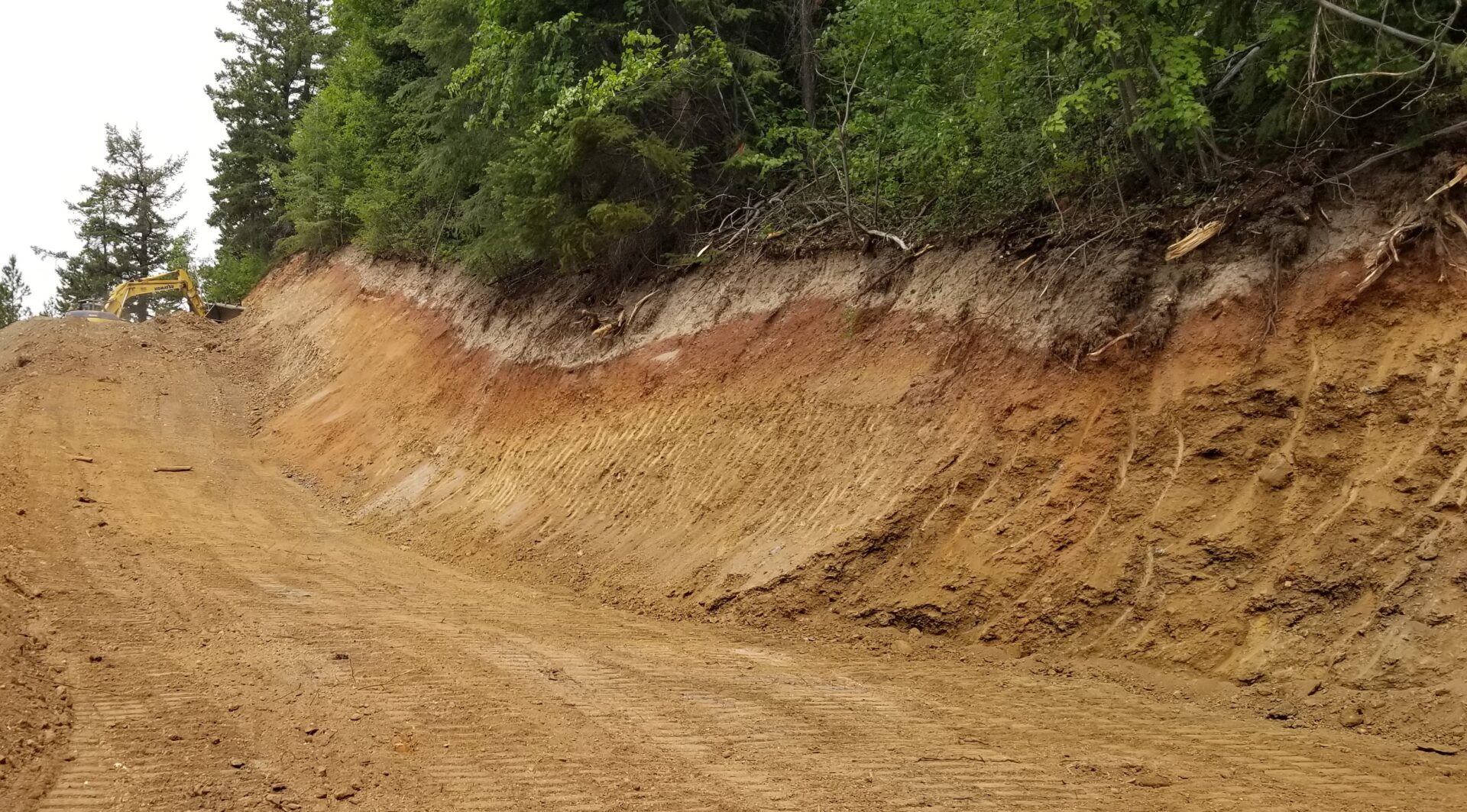Project profile by Carolyn Gruske
When the Mount Meager volcano erupted about 2,400 years ago, it spewed white pumice ash in all directions, blanketing the landscape that is modern-day southern British Columbia. Even today, 54 kilometres away from the volcano, that ash deposit can be six feet deep in places. And it is this very same ash that once made it difficult for prospectors that came with the Fraser River gold rush though to recently to properly explore the Reliance Gold Project site.
Today, however, Endurance Gold Corp. understands how to conduct soil sampling in those difficult conditions, digging down to the paleo soil that sits underneath that ash. The company has also recognized another oddity of the soil at Reliance: outcrops of the Reliance bedrock gold mineralization have weathered into what company president, director and CEO Robert T. Boyd describes as “orange mud” which isn’t typical of other gold mines in the nearby area. In the Bralorne-Pioneer Gold Mining Camp, prominent quartz veins have been the heavy producers historically. Reliance is a bit different.

“There is quartz in the system, but it’s associated with breccia and a lot of iron-carbonate alteration and a small percentage of sulphur. The iron-carbonate and sulphides weather it and the mineralization turns into outcrops that don’t look particularly encouraging, but when you sample them, they have a lot of gold in them,” explained Boyd.
In order to understand the property, which is located about four kilometres east of the village of Gold Bridge and four hours north of Vancouver, Endurance has taken a number of steps. In 2020, the company began its exploration work by sampling the soil in old bulldozer trails that cut through the surface layers and made it relatively easy to sample the soil horizon.
The next step was to look at the vegetation, sampling Douglas Fir twigs for trace elements absorbed as nutrients by the tree—elements that are associated with the gold system. The trees helped Endurance target a specific two-kilometre-long area for additional exploration, but they weren’t the only indicators. Endurance employed everything from LiDAR topographic surveying, soil geochemistry, biogeochemistry and other geophysical tests before beginning reverse circulation (RC) drilling.
“We realized if we tried to diamond drill those weathered mineralized outcrops, we wouldn’t get core recovery, so we designed a plan initially test with RC drilling for the good recovery, but it wasn’t in core. It was just rock chips in the mud that was collected as we drilled through the weathered zone,” said Boyd.

Endurance has now transitioned into diamond drilling in the unweathered sections, having completed 60 diamond drills totalling 12,606 metres by the end of 2022 (plus 84 RC holes) and so far, ten diamond drill holes have been done this year with the goal of drilling up to 15,000 metres. Boyd says Endurance has identified one structure, the Royal Shear Trend, where there are three areas of multiple gold intercepts (the Eagle, Imperial and Diplomat prospects) and is doing early-stage work on other structures on the property. Of the 60 completed by the end of 2022, 41 of the holes returned drill intersections in excess of three metres wide grading at least 3.4 grams per tonne gold (gpt), with the highest grade being 15.70 gpt gold over 24.8 metres including 26.96 gpt gold over 4.1 metres.
Being so close to Gold Bridge, which began as a mining town, means that many residents are part of the project’s workforce. The local hotel serves as a logistical support base and the hotel’s owner handles shipments for the company.
Nearby First Nations have also gotten involved in the project. Approximately 25 percent of the exploration workforce are from the Tsal’alh First Nation and were hired through the Tsal’alh Development Corp. Although Boyd said the Tsal’alh workers are highly skilled, Endurance furthered their training, and now many assist with aspects of drilling support, geotechnical activities, channel sampling, soil and rocksoil sampling.
Additionally, the company has an exploration agreement with the Xwísten (Bridge River First Nation) which covers the company’s exploration activities through to completion of a Feasibility Study. The company also welcomed Xwísten as shareholders with the grant of 130,000 common shares of the company. Endurance also contracts out camp services and supplies from Xwísten-owned businesses.
“Our objective is to ensure whatever we do in the area of benefits and increases the capacity of the local communities and it’s only natural for First Nations to be in partnership with what we are doing,”
Robert T. Boyd
That’s especially important to Boyd, as historically, “Indian trails”, as they were then known, were recognized by those whose job it was to verify the gold finds in the province’s first gold rush. Endurance received a copy of a circa 1865 letter, given to the company by the Xwísten, one of the St’at’imc First Nation, written by Andrew T. Jamieson. Jamieson, who was accompanied by Evan Cadwallader, was sent out by the provincial gold commissioner, Andrew Charles Elliott, to confirm there was gold in the headwaters of the Bridge River Valley, which he did. He also reported back there was gold found in Gun Creek which opens into Carpenter Lake, directly across the valley from the Reliance site.

“There’s a lot of history to the camp. We are in the process of defining a new discovery on surface and possibly finding some of that initial gold that was first recognized by the prospectors and likely the First Nations who were active in this area before the Fraser Gold Rush prospectors arrived.”
